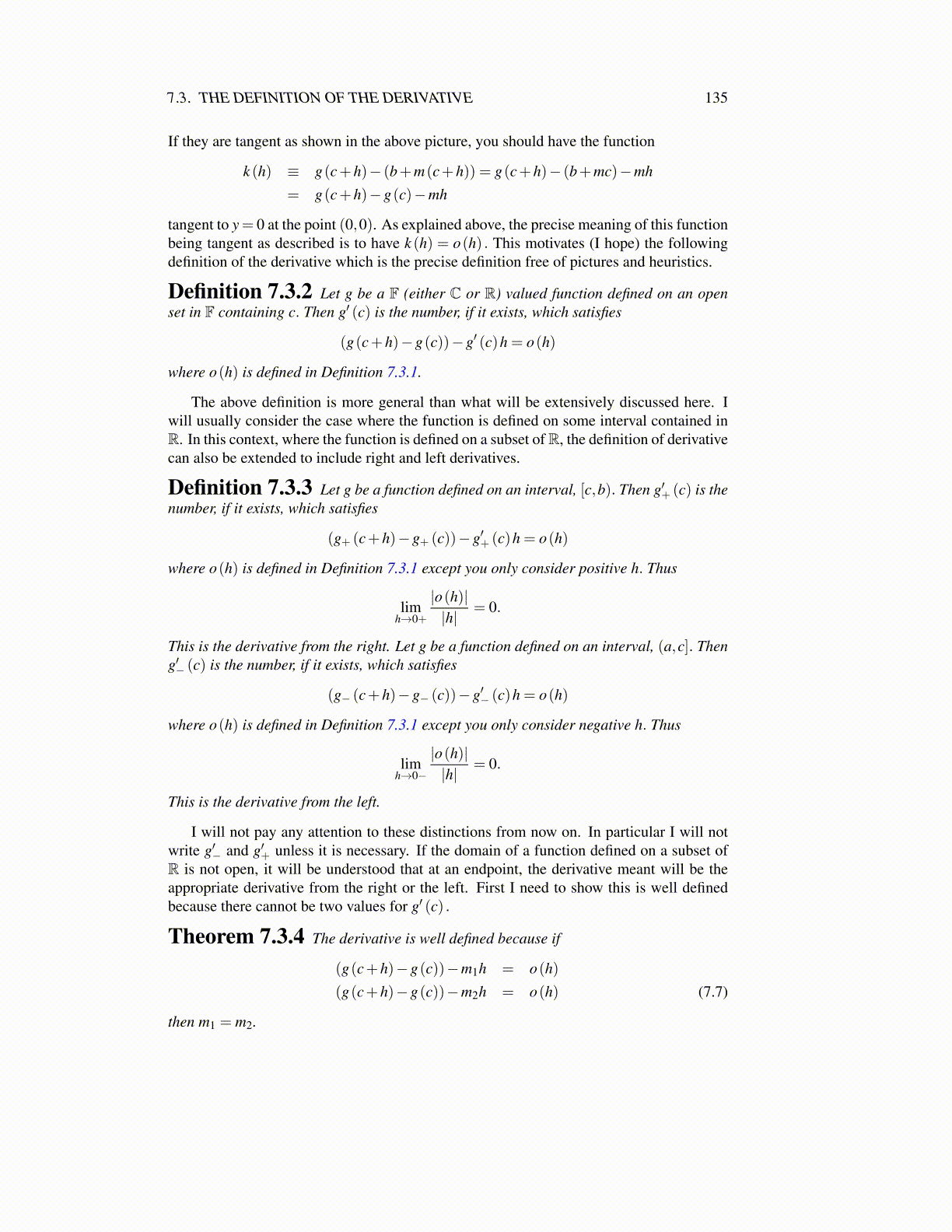
7.4. CONTINUOUS AND NOWHERE DIFFERENTIABLE 135
But from the first inequality, if |h|< δ , then |g(c+h)−g(c)|< (|g′ (c)|+1) |h| and so for|h|< min
(δ , δ 1
(|g′(c)|+1)
), it follows |g(c+h)−g(c)| < (|g′ (c)|+1) |h| < δ 1 and so from
7.9,
o(|g(c+h)−g(c)|) <ε
|g′ (c)|+1|g(c+h)−g(c)|
<ε
|g′ (c)|+1(∣∣g′ (c)∣∣+1
)|h|= ε |h|
and this shows limh→0o(|g(c+h)−g(c)|)
|h| = 0 because for nonzero h small enough,
o(|g(c+h)−g(c)|)|h|
< ε.
This proves 7.8.The assertion about continuity follows from 7.7. Just let h= x−c and the formula gives
the following for |x− c| small enough.
|g(x)−g(c)|<(∣∣g′ (c)∣∣+1
)|x− c|
Of course some functions do not have derivatives at some points.
Example 7.3.7 Let f (x) = |x| . Show f ′ (0) does not exist.
If f ′ (0) did exist, then whenever hn→ 0 where hn are distinct, then limn→∞|0+hn|−|hn|
hn=
L for some L. However, if hn→ 0 with each hn > 0, you get 1 for the limit and if hn→ 0with each hn < 0, then you get −1 for the limit. Thus the limit does not exist.
The following diagram shows how continuity at a point and differentiability there arerelated.
f ′(x)exists
f is continuous at x
7.4 Continuous and Nowhere DifferentiableHow bad can it get in terms of a continuous function not having a derivative at some points?It turns out it can be the case the function is nowhere differentiable but everywhere con-tinuous. An example of such a pathological function different than the one I am about topresent was discovered by Weierstrass in 1872. However, Bolzano was the first to producea function in the 1830’s which was continuous and nowhere differentiable although he didnot show this completely.
Lemma 7.4.1 Suppose f ′ (x) exists and let c be a number. Then letting g(x)≡ f (cx) ,
g′ (x) = c f ′ (cx) .